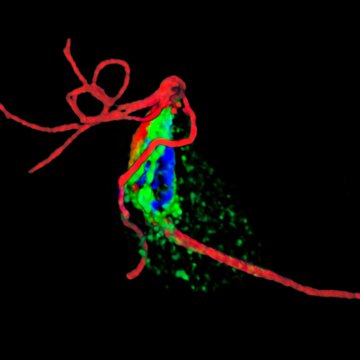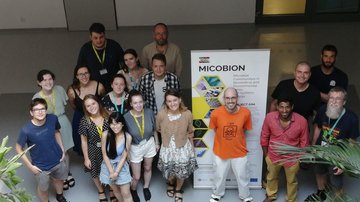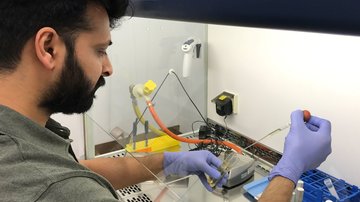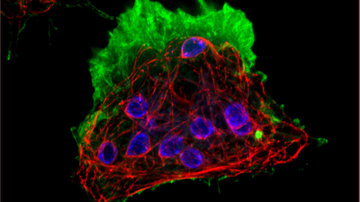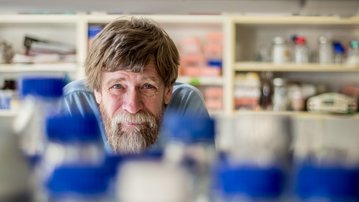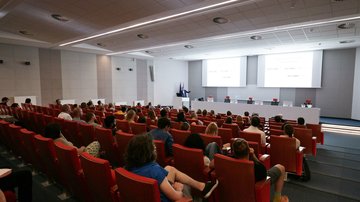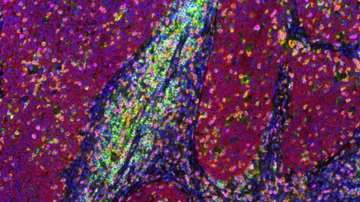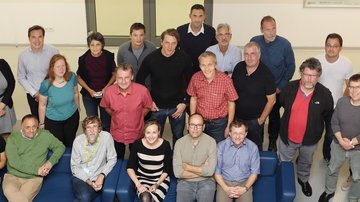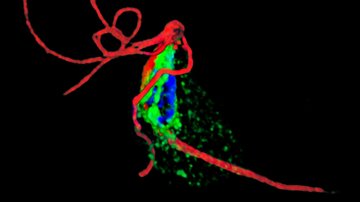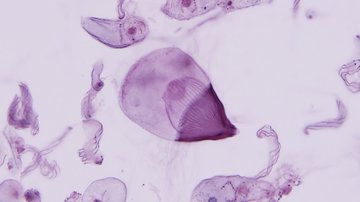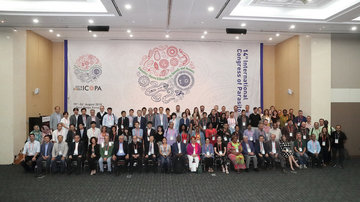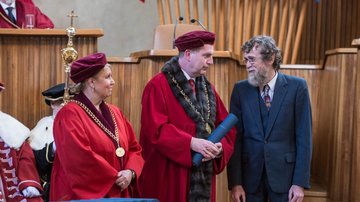About us
This project is focused on functional studies of genes and their products which are associated with biogenesis and function of specialized organelles such as highly modified mitochondria called hydrogenosomes and mitosomes in some parasites. The research of these unique cellular structures brings not only fascinating discoveries on the eukaryotic diversity, but more importantly it provides potential for the development of new anti-parasitic strategies.
Objectives:
- Mapping the unique cellular functions related to the pathogenicity and parasitic lifestyle in selected parasitic protozoa. The attention will mainly be paid to organisms adapted to environments with low oxygen levels (Trichomonas vaginalis, Giardia intestinalis, Entamoeba histolytica) and intracellular parasites such as microsporidia.
- Search for and investigation of unique metabolic pathways and specific modifications of organelles and other subcellular structures in relation to the interactions between the host and the parasite, investigation of selected metabolic pathways and proteins with anti-parasitic potential.
The Hydrogenosomes
The hydrogenosomes are unusual organelles present in certain anaerobic unicellular eukaryotes such as trichomonads, cilliates, amoeboflagellates and fungi. They were discovered independetly at the Rockefeller University in New York (Lindmark and Muller, J. Biol. Chem., 248:7724-7728, 1973) and at the Charles University in Prague (Cerkasovova, A., Lukasova, G., Cerkasov J., and Kulda, J., J. Protozool., 20:537, 1973) more than 30 years ago.
However, the origin of these organelles is still question of debates:
- Are they derivatives of mitochondria?
- Did they evolve independently from anaerobic bacteria?
- Did they derive from peroxisomes?
- Did hydrogenosomes and mitochondria evolve from a common proteobacterial ancestor?
Mitosome
Mitosome is a name given to the organelle of mitochondrial origin present in type I "amitochondrial" eukaryotes. It has been described in Entamoeba histolytica and later in microsporidian Trachipleistophora hominis. Presence of mitosome as well as genes of mitochondrial origin in genomes of these organisms suggests that contemporary amitochondriates ones harboured mitochondria, and do not represent lineages, which evolved before acquisition of mitochondria. Recently, mitosome was identified also in Giardia intestinalis, an amitochondrial protist, which was considered to be early branching primary amitochondrial eukaryote.
The mitochondrial origin of mitosome is supported by
- presence of two membranes surrounding these organelles,
- localization of proteins of iron sulfur cluster assembly machinery within these organelles (IscU, IscS, ferredoxin),
- targeting of proteins into the mitosome by means of N-terminal leader sequences with similar properties of mitochondrial leader sequences,
- FeS cluster assembly activity idetified in mitosome-rich cell fraction.
Localization of IscU in mitosome of Giardia intestinalis
Fluorescent Microscopy
Resistance to Metronidazole
Metronidazole is a drug of choice for treatment of trichomoniasis as well as other infections caused by anaerobic pathogens. The selective toxicity of metronidazole is based on its reductive activation by low-redox electron carriers such as ferredoxins. In T. vaginalis the drug is activated within hydrogenosomes containing ferredoxin-linked electron chain. The electrons are genereted by oxidative decarboxylation of pyruvate or malate by activity of pyruvate: ferredoxin oxidoreductase or NAD-dependent malic enyzme, respectively. Under anaerobiosis, the terminal acceptor of electrons is hydrogenase producing molecular hydrogen, while under aerobic conditions the electrons are accepted by oxygen. Metronidazole compete for the electrons with hydrogenase or oxygen, which results in its reduction and release of cytotoxic nitroradicals.
There are two type of metronidazole resistance:
- Aerobic resistance is based on impaired oxygen scavenging system in hydrogenosomes. This type of resistance is found in strains isolated from patients refractory to standard treatment.
- Anaerobic resistance is based on loss of electron generating pathways responsible for the drug activation. Anaerobicaly resistant strain were developed only in vitro. It seems that aerobic and anaerobic resistance are two steps of the common process.
Tritrichomonas foetus and Tritrichomonas suis: two different names, two differnet hosts but only a single species?
T. foetus is a well know parasite causing sexually transmitted disease in cattle, while T. suis is considered to be a commensal of pigs. In Europe,
T. foetus was almost eradicated, while T. suis is still a common organisms.
However,
Their morphology is identical:
- No differences by PCR fingerpriting:
- No difference in ITS1-5.8rRNA-ITS-2 sequences: Accession Numbers AY 055799, AY055800 (NCBI).
Genomics and Proteomics
Analysis of Hydrogenosome Proteome / Analysis of Mitosome Proteome
In collaboration with proteomic groups at the University of Birmingham, Alabama, USA and Jacques Monod Institute, France, we initiated investigation on Trichomonas vaginalis hydrogenosome proteome.
More info HERE

